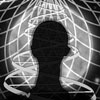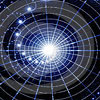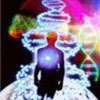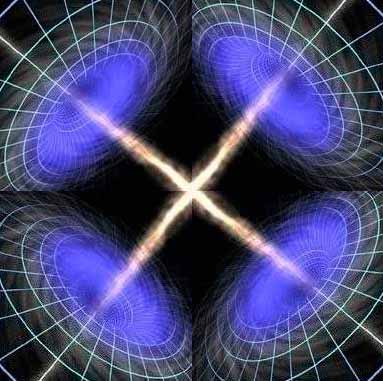Holographic Model Of The Brain
Numerous studies have corroborated the holographic model in studies of memory and perception. The question of how and where memories are stored was what led Carl Pribram on the road to formulating his holographic model. In the 1940’s it was thought that memories were stored at specific locations in the brain. There had been research conducted in the 1920’s which seemed to support this view. Researcher Wilder Penfield had offered convincing evidence that specific memories had specific locations in the brain. In a series of experiments, Penfield stimulated parts of the brain of patients and noticed that specific areas evoked certain specific memories.
In 1946, Pribram went to work for physiologist Carl Lashley at the Yerkes Institute of Primate Biology. Lashley had trained rats to perform complicated tasks which involved working their way through mazes. He then removed portions of their brain in an effort to try and remove the area that had the memory of the maze. No matter how much brain tissue he removed, the rats still retained the memory of how to run the maze. This indicated that memory itself was not localized but was somehow spread throughout the brain as a whole. No process existed at the time that would explain this. Around 1965, Pribram read an article describing the creation of the hologram and the answer became quite clear.
Holograms depend on the interference patterns that occur when the patterns of two or more waves ripple through each other. It was discovered that electrical impulses travel through the brain in waveforms that cause interference patterns, further substantiating the holographic nature of the brain.
Another aspect of holograms is that if you take a piece of the hologram and remove it, the piece contains the complete picture of what the total hologram contained. The ability of the brain to preserve memory functions evidently works the same way. Memory is not the only aspect that the brain processes in a holographic way. It was discovered that vision is processed in the same manner.
The apparent ability of the brain to create an internal hologram explains the lack of any one-to-one correspondence between the external world and the activity of the brain. The only question that remained was, what wavelike phenomenon was the brain using to create internal holograms? It was known that electrical impulses travel in waves throughout the brain. This turned out to be part of the process that creates internal holograms.
Holography also explains how the brain can store so many memories in so little space. Mathematician John Von Neumann, who had achieved some notoriety because of his alleged involvement with the Philadelphia Experiment (Project Rainbow) and the subsequent Phoenix Projects, calculated that over the course of a human lifetime, the brain stores 2.8 x 1020 bits of information (2,800,000,000,000,000,000 bits), as mentioned.
Another interesting aspect of the hologram is that by changing the angle with which the light from the laser strikes the photographic film, it was discovered that many 3-D images could be stored on the same piece of film. It has been suggested that our ability to recall data is equivalent to changing the wavefront angle that passes through the brain. When we are unable to recall data, it may be equivalent to failing to find the right angle.
The holographic aspect offers additional understanding about the associative aspects of memory. There is no other type of holographic recording technique in which the light of a single laser beam is bounced off two objects simultaneously. The light bounced off each object is allowed to collide and the interference pattern is captured on film. Whenever one of the objects is illuminated with laser light, and this light is passed through the photographic plate, the image of the other object will appear. If the human brain function is holographic in nature, a similar process might explain why certain things evoke memories of other things. Other types of holography, such as recognition holography and interference holography, may explain how we can recognize familiar things and also recognize the face of someone we have not seen for years.
Conversion of Waveform Patterns In The Brain By The Use of Fourier Transformations
Research seems to indicate in the brain, complex patterns are converted into simple waveforms. During the last century, a mathematician named Fourier evolved what later became known as Fourier Transforms which accomplish the same task – conversion of complex waveforms (interference patterns) into simple waveforms or conversion of images to waveforms and back again. The “whole-in-every-part” aspect of holograms is one of the by-products that occur when interference patterns are translated into the Fourier language of waveforms.
The Visual Systems of the Brain
In the early 1970’s researchers discovered that the visual systems in the brain functioned as a kind of frequency analyzer. Since frequency is a measure of the number of oscillations per unit of time, it suggests again that the brain functions in the same way that a hologram does. Later, in 1979, Berkeley physicists Russell and Karen DeValo discovered that in vision, the brain responds not to the patterns of what a person see, but to the Fourier translations of the patterns. Thus, the brain definitely is making use of Fourier mathematics to convert images into waveforms. This discovery was subsequently confirmed by other labs around the world.
Another aspect of the visual system of the brain is that the brain is actually what “sees”. The eyes only conduct the specific frequencies into the brain. Since there is considerable evidence to support the practice of “eyeless sight”, seeing what is around you, including colors, without the use of the eyes, the brain can be seen as a receiver, translating frequencies impacting it from the exterior into waveforms or images that are perceived by consciousness.
Other Senses and Frequency Analysis Using Fourier Transformations
It was eventually discovered that all the senses involved analysis of frequency; the sense of smell, for instance, involves what are termed “osmic frequencies”. Work done by the scientist Bekesy and others has demonstrated that the skin is sensitive to frequencies and vibrations. Interestingly, Bekesy also discovered that the mathematical equations that predicted how his subjects would respond to various frequencies were Fourier Translations. Russian physicist Nickoli Bernstein made the discovery that even our physical movements were encoded in the brain in the language of Fourier Transforms. If the brain analyzes movements by breaking them down into their frequency components, it explains the rapid rate at which we learn many complex tasks. In effect, the brain is Fourier analyzing various aspects of complex tasks and absorbing them as a whole. Substantiating this, in the 1970’s, Pribram discovered that selected neurons in the motor cortex respond to a limited bandwidth of frequencies.
Holographic Aspects of Particles and Waves
If the holographic model of the brain is taken to its logical conclusion, it opens the door on the possibility that even “objective reality”, the world of objects around us, might not exist in the way we believe it exists. It seems likely that what is really “out there” is a vast resonating symphony of waveforms that comprise a frequency domain that is transformed into what is perceived only after it enters the brain.
Work done by Bohm at Pennsylvania State College indicates that if you break matter down far enough, the “pieces” no longer have the traits normally considered to be possessed by “objects”. Although an electron can sometimes behave as if it were a compact little particle, it was found that it literally possesses no dimension. An electron is simply not an “object” as usually define an “object”. An electron can sometimes behave as a “particle” or behave as a “wave”. This ability is common to all “sub-atomic particles”. Physicists believe that sub-atomic phenomena should be viewed as a single category of something that is somehow both a “particle” and a “wave”; that “something” is called a quanta.
There is compelling evidence that the only time quanta manifest as particles is when we are looking at them, which indicates that consciousness plays an important part in the transformation of matter. When an electron is not being looked at, experimental findings suggest that it is always a “wave”.
Connections Between Sub-Atomic Events Indicating Quanta Possess Consciousness
An aspect of quantum reality that is especially interesting is the state of inter-connectedness that is seen to exist between apparently unrelated sub-atomic events. At the Berkeley Radiation Laboratory, David Bohm did some vital work with plasmas. A plasma is a gas containing a high density of electrons and positive ions (atoms that have a positive charge).
Bohm found that once electrons were in a plasma, they stopped “behaving” like individuals and started “behaving” as if they were part of a larger inter-connected whole. Like some ameboid creature, the plasma constantly regenerated itself and enclosed impurities within a wall, in the same way that a biological organism might encase a foreign substance. The collective movement of electrons in this manner was given the expression “plasmons”, and their discovery established Bohms reputation as a physicist.
During this same period, it was discovered that the idea of “wholeness” had importance. Classical science looks at the idea of wholeness as the “sum of the reaction of its parts”. What was indicated was that the behavior of the “parts” was actually organized by the whole. This suggests that the idea of wholeness is the primary aspect of reality.
The Concept of Non-Locality
Many interesting things have been discovered in quantum physics. One of the findings involves the idea of location. At the level of our everyday lives, things appear to have specific locations. However, when one examines all the data that has come from investigations at the quantum level, location ceases to exist. All points in space become equal to all other points in space. Physicists have termed this property as non-locality.
The Concept of Order
Classical science generally appears to divide things into ideas of ordered and disordered states of arrangement. As physicists delved more deeply, it was realized that there was no end to the hierarchies of order, and that there is no such thing as disorder. Orders of an ultra-high degree appear as random from a lower perspective. Interestingly, mathematicians are unable to prove the existence of randomness. What we perceive to be a tangible reality is really kind of an illusion. Underlying it is a deeper order of existence that gives birth to all objects and the appearances of objective reality in the same way that a piece of holographic film gives birth to a hologram. There is overwhelming evidence that this deeper order of existence has one source: Consciousness.
Physicists term this deeper level of reality the implicate or enfolded order, and the perceived level of existence as the explicate or unfolded order. The manifestation of all forms in the universe are increasingly seen as stages of countless enfoldings and unfoldings between these two types of order. When a “particle” appears to be destroyed, for instance, it is not lost. It is merely enfolded back into the deeper order from which it came.
The Holographic Aspect of Consciousness
We have seen that there is an apparent relationship between the various state of quanta and consciousness; when it is examined it takes on the attributes of a waveform. When it is unexamined it seems to behave as a particle. There is evidence that consciousness and matter are subtle forms of each other. The relationship between the two lies in the inplicate order. Consciousness is present in varying degrees of enfoldment and unfoldment in all matter, which is perhaps why plasmas possess some of the traits of living things.
It is because of the relationship between consciousness and matter and the holographic nature of both that every portion of the universe contains the whole; all the “past” and all the “future” also is enfolded in every point in the universe. Every cell in the body enfolds the universe.
Posted in Science For The New Agewith comments disabled.






